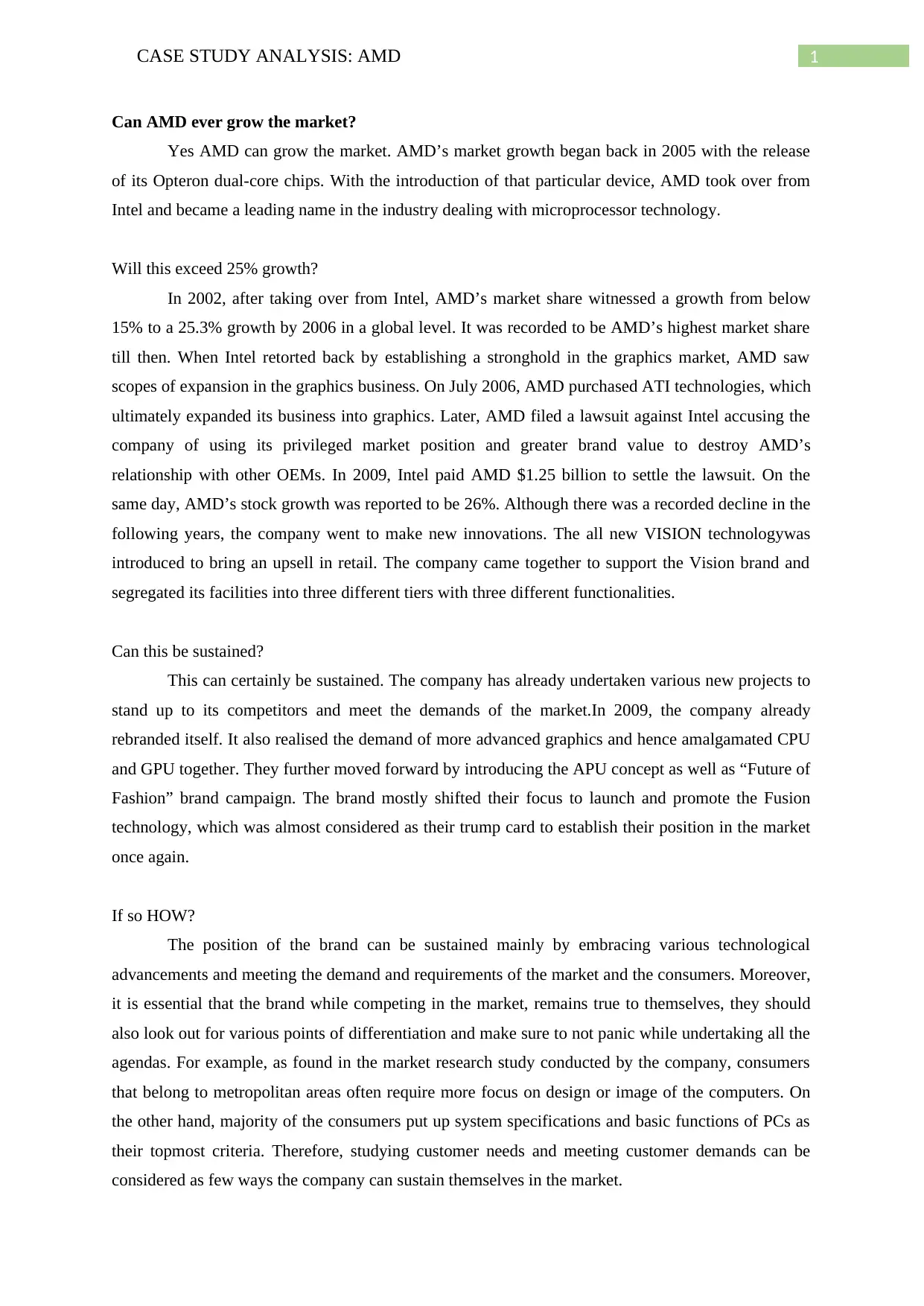University Case Study: AMD's Market Growth Strategies
VerifiedAdded on 2022/09/21
|2
|556
|16
Case Study
AI Summary
This case study analysis examines Advanced Micro Devices (AMD)'s potential for market growth, particularly focusing on the AMD Fusion launch and its impact on the company's strategies. The analysis delves into AMD's historical market share, the introduction of the Opteron dual-core chips, and the acquisition of ATI technologies. It explores the challenges and opportunities faced by AMD, including the lawsuit with Intel and the introduction of new technologies like VISION. The case study also discusses the implications of the delayed Llano APU launch and the accelerated release of the Brazos APU, evaluating the sustainability of AMD's growth strategies. The analysis highlights the importance of technological advancements, meeting consumer demands, and differentiating in the market. Overall, the case study provides a comprehensive overview of AMD's market position and its efforts to sustain and grow its market share through strategic decisions and innovation.
1 out of 2








![[object Object]](/_next/static/media/star-bottom.7253800d.svg)